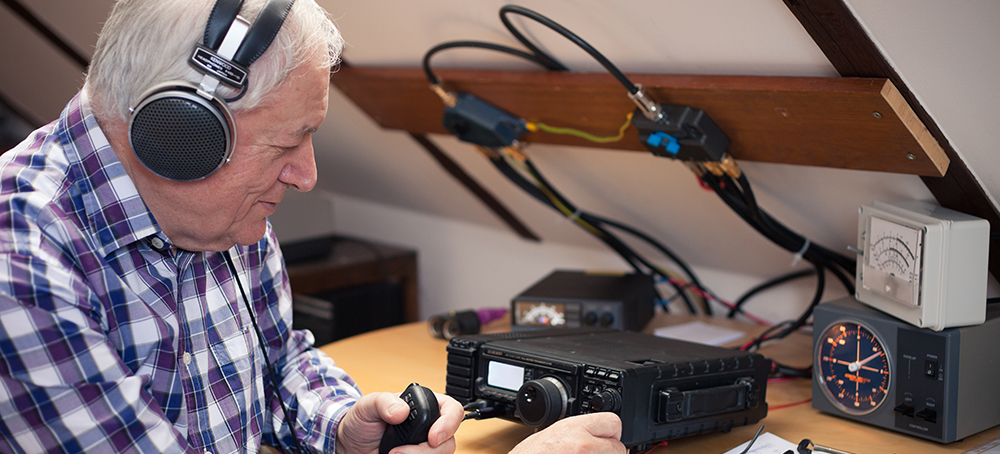
Older people are repeatedly portrayed as more likely to experience injury, loss, and death during disasters. Because of this, emergency managers and others responsible for disaster planning and recovery often consider older populations as a problem to be solved.
This has also been the case in research—much of the published literature on how disasters impact older adults focuses on advanced age as a one-sided indicator of vulnerability without considering their strengths. Both groups tend to rely too often on narrow perspectives from caregivers, elder-serving institutions, and others responsible for elder care to address issues rather than on the accounts of older people themselves.
This tendency to ignore the voices of older adults and underestimate their resilience not only diminishes their ability to contribute, but also deprives the entire community of the valuable skills and knowledge they have to offer.
Expanding Perspectives of Aging
Uninformed attitudes about how older adults experience disaster often stem from negative stereotypes of aging and the aged. Characterizing aging as an inevitable downward spiral—and older adults as flatly vulnerable—unfairly denies their agency and obscures the breadth of their capacities. This thinking has undergirded systems that keep older people from meeting their own needs and leveraging their skills for the good of the community during crisis.
Older people’s diversity, abilities, and contributions to community resilience are less frequently discussed, but there is much to be gained from engaging and listening to them when planning for disasters. Fortunately, this is beginning to change. Emerging voices in research and practice have begun expanding the discourse about aging and disasters in ways that appreciate the agency, strengths, and resilience of older adults. As these conversations become more common, so too will examples of elders supporting their communities in disasters.
Older Adults Turn Personal Preparedness Into Community Response
One example of older people enhancing community resilience can be found in a response to the 2010 Fourmile Canyon Fire in Boulder County, Colorado. The fire spurred power outages that disrupted communication networks and kept many residents from getting evacuation information. In response, a group of formal and informal mountain community leaders—which included many older people—formed a coalition, now known as the InterMountain Alliance, to regularly share knowledge and information about common interests, such as emergency preparedness.
The alliance eventually worked with the Boulder County Amateur Radio Emergency Services to develop two amateur (ham) radio networks that could be activated when other communication methods failed—the Mountain Emergency Radio Network and the Allenspark Neighbors Emergency Network. Older mountain residents spearheaded many of these efforts and recruited dozens of other residents to be trained as ham radio operators with the explicit intent of strengthening emergency communication for both personal and community preparedness.
Several years later, one of these networks was put to the test when a massive flood washed away major roads, trapping a group of schoolchildren and their chaperones on an outdoor education trip. Older adults within the amateur radio network were able to make contact with the group, relay information to the Boulder County Office of Emergency Management, find an alternate evacuation route, and ultimately facilitate a successful evacuation.
In this case, collective action, driven by leadership from local seniors, provided critical system redundancy and direct support during a crisis.
Intentional Engagement for a More Connected Recovery
In Boulder County, older adults stepped in and showed what an asset they were to their communities. But a project in Japan shows how intentionally including older people in disaster recovery and resilience building efforts creates more beneficial outcomes for everyone.
The Ibasho project was established in Ofunato, Japan, after the 2011 Great East Japan Earthquake and Tsunami. The project—recognizing older adults as valuable assets to the community—intentionally engaged them as contributors and empowered them to play a meaningful role in the recovery by operating an all-ages community gathering space. The Ibasho Cafe offered amenities such as an organic farm and farmers market, festivals and events, after school care for children, and lessons on operating equipment and meeting basic needs without electricity, all primarily coordinated by elders.
Research found that, regardless of age, those who regularly frequented the Ibasho cafe experienced an enhanced sense of belonging in the community. Additionally, the project connected residents of all ages, strengthened social capital, and benefitted elders at risk of social isolation. This demonstrates how inclusion can create positive outcomes for older people that ripple through entire communities.
Moving Toward Inclusion
Understanding the experiences older adults have in disaster and how they plan can reframe our thinking about what preparedness and resilience can look like. This, however, will require moving past stereotypes of aging, acknowledging the agency of older people, and intentionally including them in disaster planning and research. Older people need to be asked for their perspectives and play a key role in decision-making. Above all, they should be valued as assets, not burdens, to their communities.
Nnenia Campbell is executive director of the Bill Anderson Fund and a research associate with the Natural Hazards Center at the University of Colorado Boulder. Campbell’s research centers on the intersections between disaster vulnerability and resilience among older adults, racial and ethnic minorities, and other marginalized communities, as well as the roles that community-based organizations play in disaster preparedness, response, and recovery. Her work translates empirical research on the social aspects of disasters into tools and information products for practitioners and decision-makers, with an emphasis on inclusive engagement.